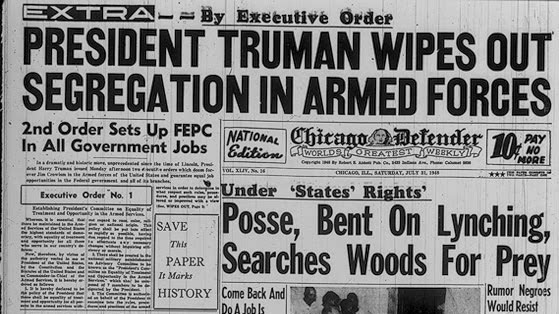More School Desegregation Orders Expected To Follow: Legal Analysis

Table of Contents
The Legal Basis for School Desegregation Orders
The fight for school desegregation has a long and complex history, rooted in the landmark 1954 Brown v. Board of Education Supreme Court decision. This ruling declared state laws establishing separate public schools for black and white students to be unconstitutional, overturning the "separate but equal" doctrine established in Plessy v. Ferguson. Brown v. Board set the stage for decades of legal battles aimed at dismantling de jure segregation—segregation mandated by law.
Beyond Brown, several federal statutes and regulations bolster the legal basis for school desegregation orders. Title VI of the Civil Rights Act of 1964 prohibits discrimination on the basis of race, color, or national origin in any program or activity receiving federal financial assistance, which includes most public schools. The Equal Educational Opportunities Act of 1974 further strengthens this mandate, requiring schools to take affirmative steps to overcome the effects of past discrimination.
Courts employ specific legal standards to determine whether a school district is violating desegregation laws. They distinguish between de jure segregation (segregation mandated by law) and de facto segregation (segregation resulting from factors like housing patterns). While de jure segregation is more readily addressed through legal action, proving de facto segregation requires demonstrating intentional discrimination or a pattern of actions leading to racial imbalance.
- Key legal precedents supporting desegregation: Green v. County School Board, Swann v. Charlotte-Mecklenburg Board of Education, Milliken v. Bradley.
- Examples of legal arguments used in successful desegregation lawsuits: Proof of discriminatory school assignment policies, evidence of racially disproportionate resource allocation, and demonstration of the effects of past segregation on current racial disparities.
- Potential legal defenses used by school districts: Claims of unintentional segregation, arguments that current segregation reflects residential patterns, and challenges to the feasibility or effectiveness of proposed desegregation remedies.
Recent Trends in School Desegregation Litigation
We've witnessed a recent upswing in school desegregation lawsuits, signaling a renewed commitment to addressing systemic racism in education. This surge isn't uniformly distributed geographically; some regions, particularly those with a history of intense segregation and persistent racial disparities, are seeing more activity.
The drivers behind this increase are multifaceted. While overt, legally mandated segregation is largely eradicated, subtle forms of segregation persist. These include discriminatory housing policies that perpetuate residential segregation, school assignment algorithms that unintentionally lead to racially isolated schools, and the re-segregation of schools previously desegregated. The slow pace of desegregation in certain areas has also fueled new lawsuits.
- Examples of recent successful desegregation cases: [Insert examples with citations].
- Statistical data on school segregation trends: [Insert relevant statistics and citations].
- Analysis of the types of legal claims being made: Claims focusing on school assignment policies, resource allocation, and the cumulative effects of past discriminatory practices are prominent.
Predicting Future School Desegregation Orders
Given current trends and established legal precedents, the likelihood of more school desegregation orders is significant. The legal framework exists, and the evidence of persistent segregation in many school districts is undeniable. However, challenges remain. Successfully litigating these cases is complex and requires substantial resources. Furthermore, resistance from some school districts and communities may prolong the legal process.
The impact of future orders could be substantial, potentially requiring extensive changes to school district boundaries, busing programs, and resource allocation. These changes can be disruptive and controversial, necessitating careful planning and community engagement.
- Factors influencing future litigation: Demographic shifts, evolving political climates, and increased public awareness of racial inequities will shape future litigation.
- Potential implications of future desegregation orders: Busing, school closures, redrawing district lines, and increased funding for under-resourced schools are all possible outcomes.
- Discussion of potential legal challenges to future orders: Appeals, challenges to the feasibility of remedies, and arguments questioning the extent of court authority will likely continue.
The Role of the Courts in Achieving School Desegregation
Federal and state courts play a crucial role in enforcing school desegregation orders. Their oversight is vital to ensure compliance and to address obstacles to desegregation. However, the effectiveness of court-ordered remedies varies greatly. Some have successfully achieved meaningful integration, while others have fallen short due to lack of resources, community resistance, or inadequate judicial monitoring.
The courts face significant challenges. Enforcing desegregation requires ongoing monitoring, adjustments to remedies, and often, navigating politically charged environments.
- Examples of successful and unsuccessful court-ordered remedies: [Provide examples with citations and analysis].
- Discussion of the role of judicial oversight in achieving desegregation: Effective judicial oversight demands active monitoring, consistent enforcement, and responsiveness to changing circumstances.
- Analysis of the limitations of court intervention: Court intervention alone is not sufficient; successful desegregation requires collaboration among courts, school districts, communities, and policymakers.
Conclusion
The increasing number of school desegregation lawsuits points to a renewed legal and societal focus on achieving educational equity. The legal basis for these orders is strong, supported by decades of case law and federal statutes. While challenges remain, the likelihood of more school desegregation orders is substantial. Understanding the legal framework, current trends, and potential future impacts is crucial for all stakeholders. Staying informed about the latest developments regarding school desegregation orders and their impact on our education system is essential. Follow [insert relevant website/organization] for continued updates on this critical legal issue.

Featured Posts
-
 The Tory Partys Plea A Boris Johnson Return
May 03, 2025
The Tory Partys Plea A Boris Johnson Return
May 03, 2025 -
 Newsround On Bbc Two Hd Programme Times And Listings
May 03, 2025
Newsround On Bbc Two Hd Programme Times And Listings
May 03, 2025 -
 Why Chris Columbus Didnt Direct Harry Potter And The Prisoner Of Azkaban A Directorial Change Explained
May 03, 2025
Why Chris Columbus Didnt Direct Harry Potter And The Prisoner Of Azkaban A Directorial Change Explained
May 03, 2025 -
 Florida And Wisconsin Elections What Voter Turnout Reveals
May 03, 2025
Florida And Wisconsin Elections What Voter Turnout Reveals
May 03, 2025 -
 Bae Orta Afrika Cumhuriyeti Ticaret Anlasmasi Iki Uelke Icin Firsatlar Ve Zorluklar
May 03, 2025
Bae Orta Afrika Cumhuriyeti Ticaret Anlasmasi Iki Uelke Icin Firsatlar Ve Zorluklar
May 03, 2025
Latest Posts
-
 Lower Electricity Bills In The Netherlands A Solar Power Tariff Trial
May 04, 2025
Lower Electricity Bills In The Netherlands A Solar Power Tariff Trial
May 04, 2025 -
 Testing Lower Electricity Tariffs In The Netherlands During Peak Solar Generation
May 04, 2025
Testing Lower Electricity Tariffs In The Netherlands During Peak Solar Generation
May 04, 2025 -
 Dutch Energy Providers Explore Reduced Tariffs During Solar Production Surges
May 04, 2025
Dutch Energy Providers Explore Reduced Tariffs During Solar Production Surges
May 04, 2025 -
 Parc De Batteries Eneco A Au Roeulx Une Infrastructure Energetique De Pointe
May 04, 2025
Parc De Batteries Eneco A Au Roeulx Une Infrastructure Energetique De Pointe
May 04, 2025 -
 Au Roeulx Un Parc De Batteries De Grande Envergure Inaugure Par Eneco
May 04, 2025
Au Roeulx Un Parc De Batteries De Grande Envergure Inaugure Par Eneco
May 04, 2025
